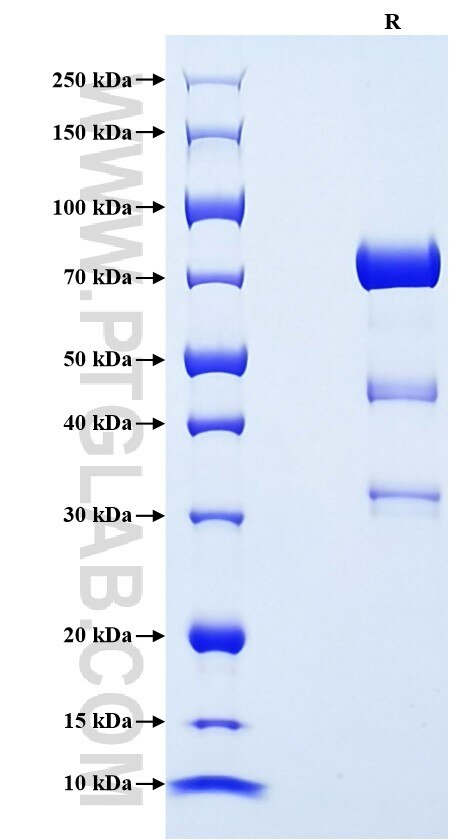Recombinant human CPE protein (rFc Tag)
Species
Human
Purity
>85 %, SDS-PAGE
Tag
C-rFc
Activity
not tested
Cat no : Eg2989
Validation Data Gallery
Product Information
| Purity | >85 %, SDS-PAGE |
| Endotoxin | <0.1 EU/μg protein, LAL method |
| Activity |
Not tested |
| Expression | HEK293-derived Human CPE protein Glu26-Ser453 (Accession# P16870-1) with a rabbit IgG Fc tag at the C-terminus |
| GeneID | 1363 |
| Accession | P16870-1 |
| PredictedSize | 73.9 kDa |
| SDS-PAGE | 68-80 kDa, reducing (R) condition |
| Formulation | Lyophilized from 0.22 μm filtered solution in PBS, pH 7.4. Normally 5% trehalose and 5% mannitol are added as protectants before lyophilization. |
| Reconstitution | Briefly centrifuge the tube before opening. Reconstitute at 0.1-0.5 mg/mL in sterile water. |
| Storage Conditions |
It is recommended that the protein be aliquoted for optimal storage. Avoid repeated freeze-thaw cycles.
|
| Shipping | The product is shipped at ambient temperature. Upon receipt, store it immediately at the recommended temperature. |
Background
CPE is a multifunctional protein harboring both enzymatic and nonenzymatic functions, largely expressed in endocrine cells and peptidergic neurons in the nervous system. Full-length CPE (F-CPE) protein is an inhibitor of Wnt/β-catenin signaling, which disrupts disheveled-induced signalosomes that are important for transducing the Wnt signal and reduces β-catenin protein levels and activity (PMID: 22824791). Defects in the gene encoding carboxypeptidase E (CPE) in either mouse or human lead to multiple endocrine disorders, including obesity and diabetes (PMID: 16219026).
References:
1. Skalka N. et al. (2013). Oncogene. 32(23):2836-47. 2. Zhu X. et al. (2005). J Neurochem. 95(5):1351-62.
